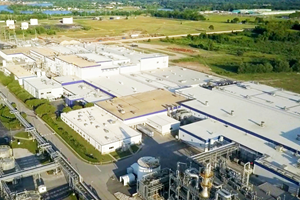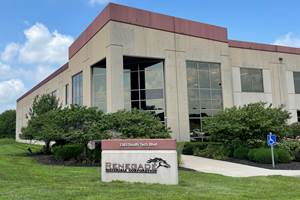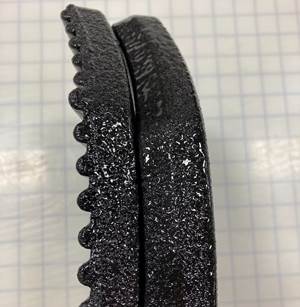F-35 makes first arrested landing aboard aircraft carrier
An F-35C Lightning II carrier varient Joint Strike Fighter conducted its first arrested landing aboard an aircraft carrier on Nov. 3 off the coast of San Diego, Calif., USA.
The U.S. Navy reports that on Nov. 3 an F-35C Lightning II carrier variant Joint Strike Fighter conducted its first arrested landing aboard an aircraft carrier off the coast of San Diego, Calif., USA.
Navy test pilot Cmdr. Tony Wilson landed F-35C test aircraft CF-03 at 12:18 p.m. aboard USS Nimitz's (CVN 68) flight deck. The arrested landing is part of initial at-sea Developmental Testing I (DT-I) for the F-35C, which commenced Nov. 3 and is expected to last two weeks.
DT-I is the first of three at-sea test phases planned for the composites-intensive F-35C. During DT-I, the test team from the F-35 Lightning II Pax River Integrated Test Force (ITF) has scheduled two F-35C test aircraft from Naval Air Station Patuxent River in Patuxent River, Md., USA, to perform a variety of operational maneuvers, including various catapult takeoffs and arrested landings. ITF flight test operations also encompass general maintenance and fit tests for the aircraft and support equipment, as well as simulated maintenance operations.
As with the initial testing of any new aircraft, the goal is to collect environmental data through added instrumentation to measure the F-35C's integration to flight deck operations and to further define the F-35C's operating parameters aboard the aircraft carrier.
The ITF test team will analyze data obtained during flight test operations, conduct a thorough assessment of how well the F-35C operated in the shipboard environment, and advise the Navy to make any adjustments necessary to ensure that the fifth-generation fighter is fully capable and ready to deploy to the fleet in 2018.
"Today is a landmark event in the development of the F-35C," said Wilson, a Navy test pilot with Air Test and Evaluation Squadron (VX) 23. "It is the culmination of many years of hard work by a talented team of thousands. I'm very excited to see America's newest aircraft on the flight deck of her oldest aircraft carrier, the USS Nimitz."
Commander, Naval Air Forces, Vice Adm. David H. Buss, was aboard Nimitz to witness the milestone event. "What a historic day today is for Naval Aviation. With the first traps of the F-35C Lightning II aboard an aircraft carrier, we begin the integration of the next generation of warfighting capability into our carrier-based air wings," said Buss. "This important milestone is yet another indicator of Naval Aviation's ongoing evolution to meet future threats and remain central to our future Navy and National Defense Strategy."
"Our F-35 integrated test team has done an amazing job preparing for today. This will be one landing out of thousands more that will happen over the next few decades," said Lt. Gen. Chris Bogdan, F-35 Program Executive Officer. "For months, we've been working with the Nimitz crew, Naval Air Forces, and our industry partners, Lockheed Martin and Pratt & Whitney, as well as their suppliers, to prepare and train for this event. We plan on learning a lot during this developmental test and will use that knowledge to make the naval variant of the F-35 an even more effective weapons platform."
By 2025, the Navy's aircraft carrier-based air wings will consist of a mix of F-35C, F/A-18E/F Super Hornets, EA-18G Growlers electronic attack aircraft, E-2D Hawkeye battle management and control aircraft, MH-60R/S helicopters and Carrier Onboard Delivery logistics aircraft.
Related Content
Materials & Processes: Resin matrices for composites
The matrix binds the fiber reinforcement, gives the composite component its shape and determines its surface quality. A composite matrix may be a polymer, ceramic, metal or carbon. Here’s a guide to selection.
Read MoreToray Composite Materials America to double Torayca T1100 production capacity
The upgrade to the company’s Decatur, Alabama, carbon fiber plant is set to begin April 2023 in order to support rising demand in defense applications.
Read MorePlant tour: Renegade Materials Corp., Miamisburg, Ohio, U.S.
Renegade Materials is known for high-performance prepregs for aerospace applications. Following its acquisition by Teijin in 2019, the company has expanded capacity and R&D efforts on a range of aerospace-targeted materials.
Read MoreUS Air Force selects Integris Composites ballistic body armor
Cratus Wave armor is thin, lightweight and reduces heat stress, providing buoyant personal protection for the 582nd Helicopter Group.
Read MoreRead Next
CW’s 2024 Top Shops survey offers new approach to benchmarking
Respondents that complete the survey by April 30, 2024, have the chance to be recognized as an honoree.
Read MoreFrom the CW Archives: The tale of the thermoplastic cryotank
In 2006, guest columnist Bob Hartunian related the story of his efforts two decades prior, while at McDonnell Douglas, to develop a thermoplastic composite crytank for hydrogen storage. He learned a lot of lessons.
Read MoreComposites end markets: Energy (2024)
Composites are used widely in oil/gas, wind and other renewable energy applications. Despite market challenges, growth potential and innovation for composites continue.
Read More






















